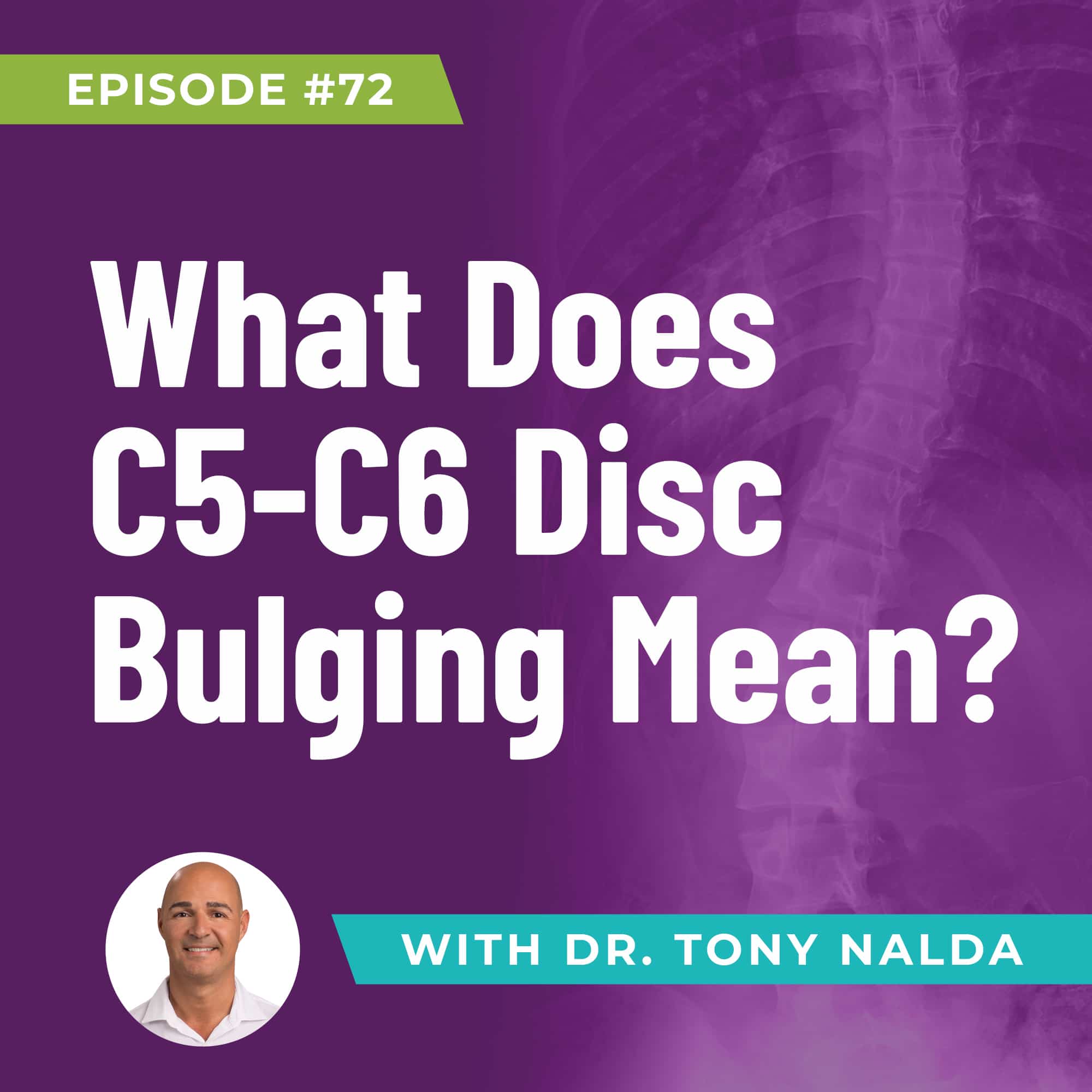Episode 72: What Does C5-C6 Disc Bulging Mean?
In understanding conditions of the spine, the first thing we have to understand is that there is different spinal sections or different areas of the spine wherein problems can occur.
In today’s episode, we dive into a common yet often misunderstood condition – C5-C6 Disc Bulging. If you've ever wondered about the neck's intricate workings and how a disc bulge can impact your well-being, then stay tuned to Dr. Tony Nalda’s podcast.
Location Matters
Think of the cervical spine as the neck's command center, the thoracic spine as the mid-back stronghold, and the lumbar spine as the low-back support system. C5-C6 on the other hand are those pivotal vertebrae in the cervical spine that play a significant role in bearing the weight of our head. C stands for cervical and five and six account for the vertebra in the cervical spine. C5-C6 bulging refers to a condition where the discs located between the fifth and sixth vertebrae in the cervical spine (neck) have shifted out of their normal position. These discs, which act as spacers and shock absorbers for the spine, are designed to handle compression forces. However, factors such as poor posture, like forward head posture or a straight neck, can cause the spine to shift from its natural alignment. This misalignment can result in increased pressure on the C5-C6 discs, causing them to bulge or protrude from their usual position.
When these discs bulge, they can exert pressure on the spinal cord and nerves that run through the area. This pressure can lead to a range of symptoms, including pain, stiffness, tingling, numbness, and even muscle weakness in various parts of the body, including the neck, arms, and hands. The bulging can particularly affect the nerves exiting the spinal cord, leading to discomfort and functional issues.
In managing this condition, it is important to address it through proper alignment of the spine. By realigning the spine and restoring its natural curvature, the pressure on the C5-C6 discs can be relieved, allowing them to return to their normal position.
For more on how to alleviate the associated symptoms and improve overall spinal health, check out Dr. Tony Nalda’s podcast.
Artlist.io 847544
Podcast: Play in new window | Download
Subscribe: RSS
Dr. Tony Nalda
DOCTOR OF CHIROPRACTIC
After receiving an undergraduate degree in psychology and his Doctorate of Chiropractic from Life University, Dr. Nalda settled in Celebration, Florida and proceeded to build one of Central Florida’s most successful chiropractic clinics.
His experience with patients suffering from scoliosis, and the confusion and frustration they faced, led him to seek a specialty in scoliosis care. In 2006 he completed his Intensive Care Certification from CLEAR Institute, a leading scoliosis educational and certification center.
About Dr. Tony Nalda
 Ready to explore scoliosis treatment? Contact Us Now
Ready to explore scoliosis treatment? Contact Us Now








